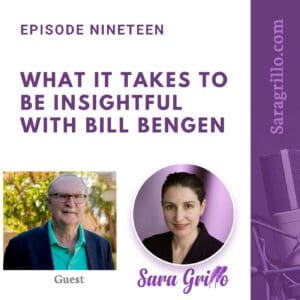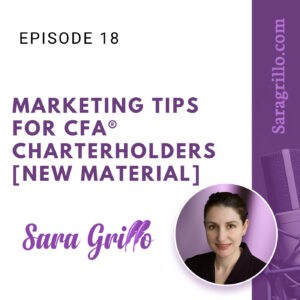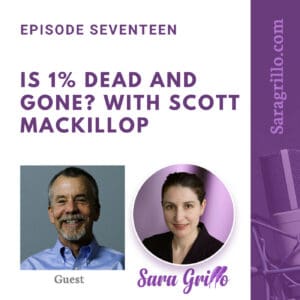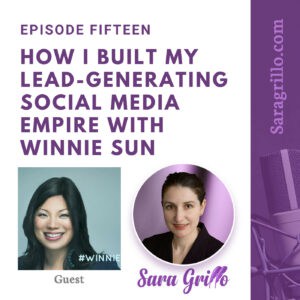Podcast: Play in new window | Download
A few years ago, I experimented with LinkedIn messages and postings and I got some of the best results of my ten years on the platform. I’m going to discuss what I think financial advisors should know about how to create LinkedIn scripts for financial advisors who wish to convert followers into leads.
For those of you who are new to my blog/podcast, my name is Sara. I am a CFA® charterholder and financial advisor marketing consultant. I have a newsletter in which I talk about financial advisor lead generation topics which is best described as “fun and irreverent.” So please subscribe!

I wrote these other blogs about LinkedIn marketing that you may want to check out, before we get started.
Get a bodacious LinkedIn summary
6 things you need to know about succeding on LinkedIn
LinkedIn for broker-dealer reps
Let’s get on with the blog!
First, let’s fixed up your LinkedIn posting feed
I’ll get to the financial advisor LinkedIn messages in a minute but the first thing I learned from my experiment is that interactive postings are what LinkedIn was designed for. When you sit there and say, “How can I get as many people as humanly possible, like every single person in my network, to be unable to resist responding to this posting?”, then some pretty interesting things happen.
Looking at postings this way puts you into the mindset of making the postings inclusive and tapping into the psychology of what others are thinking. Interactive LinkedIn postings are the way to maximize engagement, and that is the first thing that will help you if you are a financial advisor looking to convert LinkedIn followers into leads. These are the types of posts that do great in terms of views, because LinkedIn favors postings with high response activity on them.
I remember in one posting I asked people, “should financial advisors use emojis.”
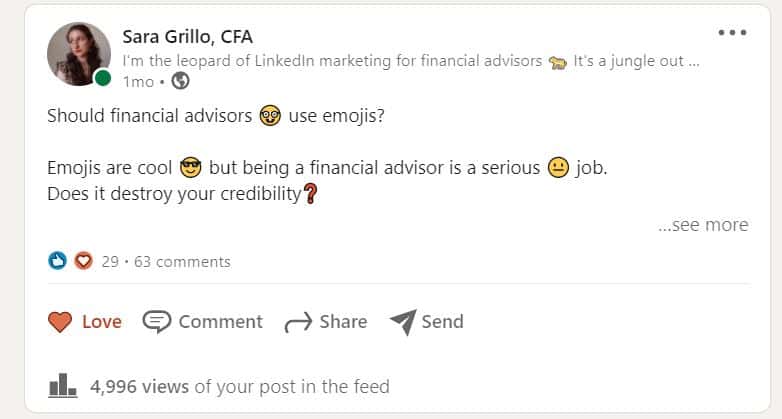
As you can see, that did great. Another was one I asked if financial advisors should wear a suit on a Zoom call.
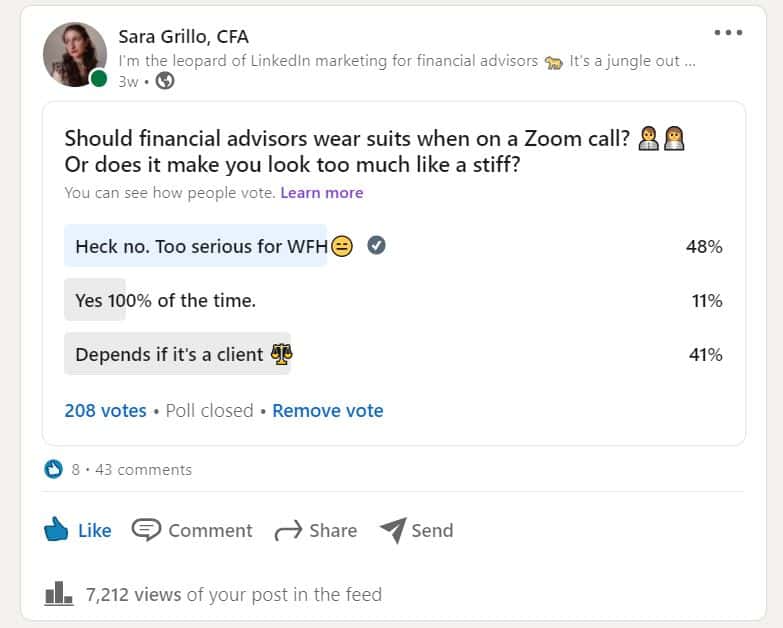
These are all things that have run through people’s minds and are subjects that people really enjoy debating about with others. And they got great results.
IMPORTANT POINTS:
- In your LinkedIn postings, ask great questions that are the kinds of things that run through people’s minds, that they are curious about, and that they want to know what others think about it.
- Ask great questions. And not just one question. Write down a list of questions and then pick the best one.
- You may even want to run it by someone in your target audience and ask them if it is something they would respond to. That is the amount of effort it really takes if you want to make an awesome posting that people will enjoy and that will teach them something.
And by the way, I have this LinkedIn training program for financial advisor if you want to get more coaching on all aspects of using the platform.
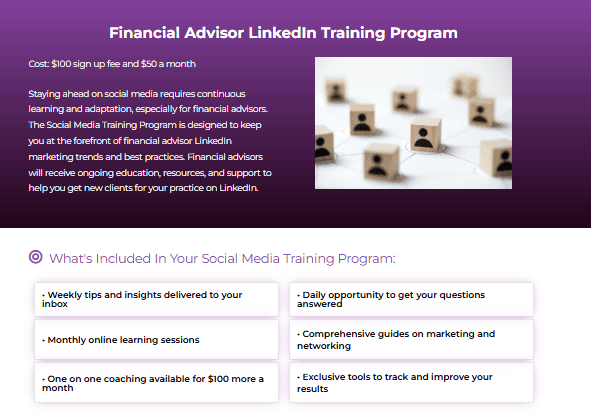
You don’t need LinkedIn Sales Navigator!
Okay now that we fixed up your LinkedIn posting feed, lol, let’s talk about what you should do if you want to us the messenger app on LinkedIn to get new clients. If I want to get clients by sending LinkedIn messages, should I just get Sales Navigator and go hit a bunch of people up, daily?
Alright, I’m about to get psycho.
There is no clearer way to say this:
HECK NO. RUN IN THE OTHER DIRECTION FROM LINKEDIN SALES NAVIGATOR.
It will make you look like spamming LinkedIn sales schmuck.
What about LinkedIn premium? Should I get that?
Heck no. Nobody reads InMails.
What about LinkedIn paid ads? Should I use those?
Heck no. Even my five year old thinks ads are annoying.
Take these actions TODAY:
Stop paying for things people hate on LinkedIn.
Instead go find some people who will love you.
Love your posts.
Love your mission.
Love talking to you on a daily basis.
Love whatever you will give them.
There’s a gazillion people on the platform. If you’re getting crickets you haven’t tried hard enough to find them.
Or you did find them and you messed it up, probably by foisting one of the “poison pills” on them (see above). Either way, you have some work to do.
How the LinkedIn prospecting cycle works for financial advisors
Some people are really good at posting on LinkedIn.
Some people are really good at messaging.
A financial advisor LinkedIn prospecting strategy is not complete just doing one or the other. You should do them both because they nurture each other.
If somebody is directly in the market for your services, or they don’t mind being approach by vendors, then you may be able to engage with them on LinkedIn messenger. But the truth of the matter is that not everybody prefers to be marketed to this way.
Some people like to be nurtured passively. They want to consume your content. They want to follow you. Maybe they are tired of direct contact with vendors, or had a bad experience with one. There is no real guarantee that somebody is going to want to talk when you approach them on LinkedIn messenger.
In my e-book, 47 Financial Advisor LinkedIn messages, I provide 47 LinkedIn scripts for financial advisors that you can use. If you haven’t gone ahead and read the book please do so.
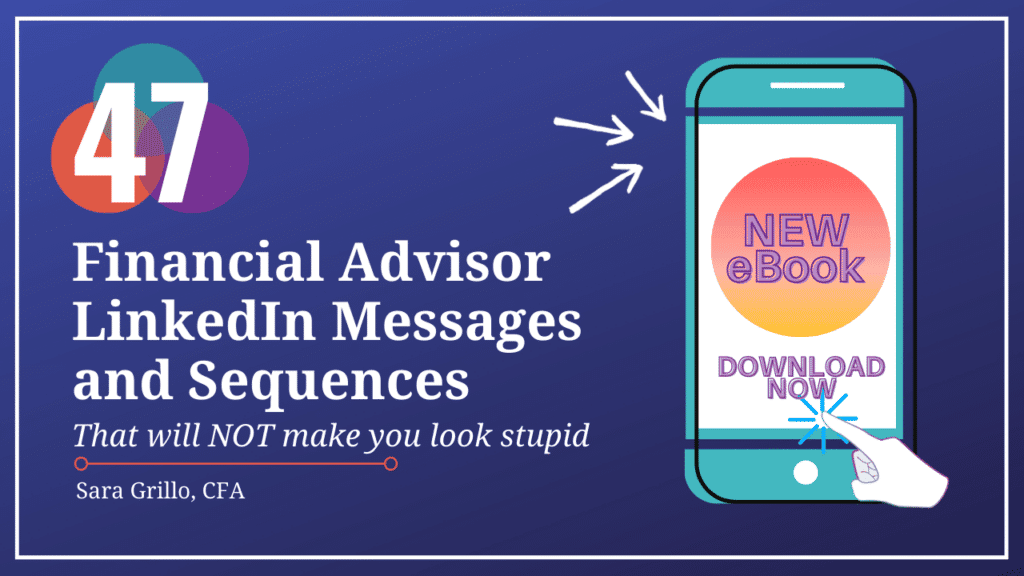
However, you are probably going to have to engage in dialogue somehow to get a follower to convert into a lead. If you’re making great postings and attracting new followers, there still does have to come the point when they raise their hand and say, “I want to talk to you about this” or “I have a question.”
Now, for the hard part.
Usually they are not going to do this without at least having some interaction with you directly beforehand on LinkedIn messenger. Without having spoken to you on LinkedIn messenger, they are far less likely to feel comfortable enough to express interest in your expertise. You are going to have to initiate some level of conversation on LinkedIn messenger despite them being an intrigued follower, if you want the business.
The cycle could go something like:
Maybe you reach out first on LinkedIn messenger. They connect. You exchange a few messages. They see your cool postings. They’re participating in your postings. Now they’re feeling a little bit more trusting of you. You message a little bit more. Then one day you post about college planning and BOOM now it’s time for them to ask you for a meeting so they message you to ask when you are free.
See?
Post, message, post, message, post, message. You can get the deal done quicker using them together than just doing one or the other.
How to effectively begin LinkedIn scripts for financial advisors
I was pretty good on LinkedIn messenger before this experiment. Keep in mind that I don’t always follow my own advice 100% of the time. But I can say that when I do follow my own techniques and am intentional about how I talk to people on LinkedIn using the strategies I am about to describe, the results are much crisper and cleaner.
In January, I tried beginning the LinkedIn messaging sequence with sentiments that were 100% about THEM and not ME. Because I had all these really great postings, all these people were reaching out to me. I had a lot of first conversations with people this January. I really took it to an extreme.
Learn more about the theory behind this in 47 Financial Advisor LinkedIn messages. Basically it is summed up by three simple words: THEM NOT YOU.
The first message has to be about them. It is almost 100% of the time that when a vendor connects with a prospect, the first message is usually some kind of a solicitation and people absolutely hate that. You really can’t come across as every other financial advisor.
Separate Yourself
You’ve got to set yourself apart in the beginning. When the first message goes poorly it is pretty hard to come back from that. They will most likely ghost you. Don’t mess it up. Dedicate high focus here. That is what I did in January and it worked out great.
I went to people’s LinkedIn pages and looked for intriguing details about their lives. So, I have to say, I was having such a good time. I mean, I really was having such a good time because I was meeting all these cool people. There were people who talking about what sports teams they liked, or that they have four kids, or they were involved with different charities, or had a side business. Do you know how interesting people can be? I was totally intrigued by some of these people.
In many cases the person was taken aback that I actually took the time to read their profile page. I sincerely do find other people intriguing and showing that genuine fascination worked out great. Be intrigued by other people. It’s fun and it just makes the conversation go so naturally. Less ghosting, more apparent trust, people were more genuine with me back because they felt I was being genuine to them. And then the next time I would post, they would comment on my next postings.
It’s so much better when you can understand each other. You have way more potential to help someone you understand. Take the time to find out; it’s out there, you can find it on their LinkedIn pages or if not, go to their website. Be the rare person who actually reads it.
Middle of a LinkedIn messaging sequence is the hardest and most important part
The middle of the LinkedIn conversation is the hardest to get through, and where most sequences fail. If you begin the sequence correctly, you’re going to have a lot more success getting through the middle part because there is more trust to go on.
Eventually you are going to have to get them to take an action that causes them to engage with what you are doing (read your blog, join newsletter, meet with you, etc.) The way that you make this transition is somewhat paradoxical.
You don’t.
You let the prospect lead themselves through it by asking them great questions that make them want to go there.
Let’s say you’re talking to a business owner and initially you were discussing some of the charitable work his/her company had done. Here’s a transition you could use.
“So I see that you just donated $20k as a company to XYZ charity. Are you involved with charitable giving personally as an individual or is it just as a company that you do so?”
Two sentences.
Remember my Two Sentence Rule?
- First sentence connects back to the beginning messages you sent.
- Second sentence moves them into a subject related to a relevant topic within finance where you could be a resource to them
This is not easy to do. It takes skill. I’d rather see you do this five times a week correctly than throw out a bunch of crap at people without skill, making you look like the typical financial advisor. If you pitch before the person is ready, it’s like throwing a ball at the batter when they don’t even have the bat in their hand.
Transition is the hardest part of all LinkedIn scripts for financial advisors. If you don’t do this right, you may have to go back and do it again differently until you move the person to where they are ready for the pitch.
How to end a LinkedIn messaging sequence
Now here is where the prospect should be ready to take action. This only happens after you transition correctly. If so, this part shouldn’t be that hard to do.
Let’s say the business owner in the last example says, “You know, I have done some charitable donations in the past but haven’t planned it out for this year.” Let’s pretend you wrote a blog about this. Now you have to tee it up, “I just wrote an article about this. Would it be okay if I sent it over?”
They say “sure.”
Now, when you deliver the action step, end it with a bang. Don’t cling here; leave the conversation suddenly and unexpectedly. There are deep psychological underpinnings to this rule; let me tell you about it.
I was running some tests on LinkedIn messaging tactics this January, and once I got to a point the person and I had completed a meaningful exchange, I immediately ended the conversation. The results were brilliant, people really responded well.
For example, when the convo got people to where they were interested in reading one of my blogs, I would go like this: “Here’s the link. Have a great evening!?”
Here were the results:
- The person responded back with a happy “you too!”.
- After that I noticed many of them commenting on future posts in my feed.
- When I went to message them again, they seemed happier to hear from me and more willing to engage.
Spontaneously ending the conversation introduces a bit of a pattern interrupt. There is an element of surprise when you leave the convo suddenly instead of dragging it out (which is what they expect you to do.)
IMPORTANT TO KNOW
There is a psychological benefit to leaving things incomplete called The Zeigarnik Effect.
Thee psychological principle called The Zeigarnik Effect states that when a task becomes suddenly interrupted, it becomes more heavily engrained in your memory. Basically, Bluma Zeigarnik was a psychologist in the days of yore, who noticed that the waiter in a restaurant was able to flawlessly recall the intricacies of unfinished orders from memory. However once the meal was over, he couldn’t remember anything about them.
Intriguing, no? Your brain has trouble moving on from an unresolved task until it’s done.
If you don’t believe me, tell me, what do you think when you read the following sentences?
May the force be ____.
There’s no place like ____.
Elementary, my dear _____.
He’s looking at you, ____.
See? Your brain can’t resist the urge to complete the task. When we have an unfinished task we remember it better.
So when you end the conversation, try ending it abruptly and leave it a bit incomplete. Use something like this:
- Here’s my scheduling links – that’s all for now – to be continued…
- I’ll come back to you on this later, I’ve got to go feed the mice.
- Oh my gosh, Antonio just brought me some cookies. I have to come back and answer this question later.
- There are two blogs on this, here is one and I’ll send you the other one after my nap.
And so having said that, I’m ending this blog.
Sara’s upshot
What’d ya think? Was this helpful?
If yes…read the ebook!
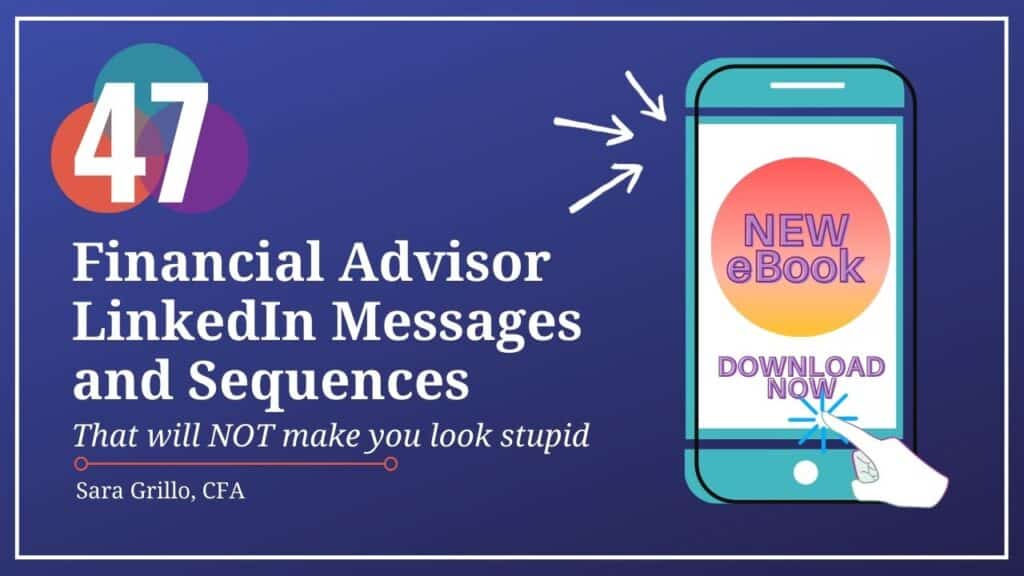
Here are some other ways I can support your quest to get new clients if you are a financial advisor.
- I am an outsourced CMO for companies who need regular, full service marketing – blogging, social media posts, newsletters, etc.
- I am an hourly consultant for those who just need one-time or recurring guidance
- People hire me as a ghostwriter to write content for a project fee
- I have a social media training program
Thanks for reading. I hope you’ll at least join my newsletter about financial advisor lead generation.
See you in the next one!
-Sara G
Music is Nice to You by the Vibe Tracks

